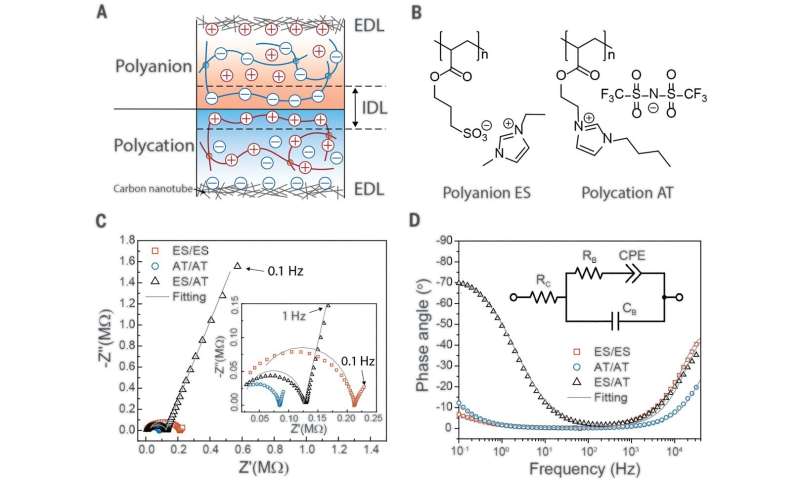Ionotronic technology that doesn't require liquid electrolytes
by Bob Yirka
A team of researchers from the University of Massachusetts and Harvard University has developed a type of ionotronic technology that does not require liquid electrolytes. In their paper published in the journal Science, the group describes several ionic devices they built and possible uses for them. Dace Gao and Pooi See Lee with Nanyang Technological University have published a Perspective piece outlining the work by the team in the same journal issue.
In recent years, companies that make consumer electronics devices have been promising products that users can bend—this would allow for the development of products such as wearable devices. Thus far, there have been very few new products, however. Because of that, scientists have been turning their attention to ionotronic technology in which the charge carriers are ions instead of electrons. But it, too, has met with some roadblocks, most notoriously, the need for liquid electrolytes, which can leak or suffer losses due to evaporation. In this new effort, the researchers in Massachusetts have found a way to create ionotronic devices that do not require liquid electrolytes, perhaps paving the way for new kinds of consumer electronic devices.
To create their new devices, the researchers used two stretchy, rubbery ionoelastomers —polycations and polyanions. With the polycation, positively charged sulfate groups were fixed to the elastomer chains while the negative counterions could easily flow. The polyanions were made in the same way but with the charges reversed. By combining them, the researchers were able to create a device that allowed current to move in just one direction—a diode analog. They also created a transistor by placing the polycation between two polyanions. And they built a transducer by placing a polyanion atop a polycation and then adding a VHB dielectric layer on top and a carbon nanotube on the bottom.
All of the devices built by the team were both soft and stretchable suggesting that devices with similar materials could soon start showing up in consumer devices. Gao and See Lee suggest that the technology could also be used to create an interface between a machine and a human, noting that both use ions as signal carriers.
More information: Hyeong Jun Kim et al. Ionoelastomer junctions between polymer networks of fixed anions and cations, Science (2020). DOI: 10.1126/science.aay8467
Journal information: Science
© 2020 Science X Network